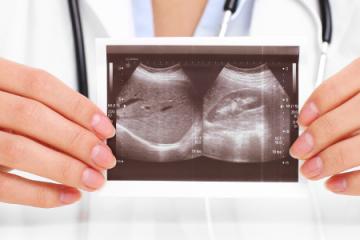




RH conflict: what happens if the mother is RH negative and the father is RH positive
Are there incompatible blood groups in pregnancy? If so, what may the fetus risk? And what is Rh factor? What happens if I am pregnant and find out that I am Rh negative while the father of the unborn child is Rh positive?
There are still many questions and, above all, fears, doubts and ‘hearsay’ that catch many women unprepared (but also, more generally, future fathers and all family members) when they find out they are pregnant or have a first pregnancy. While prenatal screening can prevent some of the problems associated with incompatibility and the trusted gynaecologist can keep the pregnancy under control by administering targeted treatment in a timely manner, it is also true that there are still many doubts and lack of knowledge associated with haemolytic anaemia, which can affect the fetus during gestation.
When? To what extent? What to do? Let us proceed in order.
The Rh factor is a protein that can be found on the surface of red blood cells. It is present in most people (Rh positive) while, in the remaining population, the red blood cells lack it (Rh negative). It is a hereditary character, i.e. parents pass it on to their children through their genetic heritage. In the first place, it should be said that most people are Rh-positive and that the presence or absence of the Rh factor has no effect on general health but, in certain particular conditions, can cause problems during pregnancy. However, the medical literature is clear in saying that there are no incompatible groups in the absolute sense but only conditions that need a little extra attention, such as that in which the mother is Rh-negative and the father Rh-positive.
Wake-up call.
What does it mean? How to explain this to non-experts? The medical term for this condition is Erythroblastosis fetalis but don’t worry if you know the times and methods. Or, to put it simply, if you know what to do and when to do it. In fact, undergoing the right screening tests during pregnancy can prevent the problems and complications of haemolytic disease in the newborn (severe hyperbilirubinaemia and jaundice, kernicterus and severe anaemia) caused by Rh incompatibility so that they can receive targeted treatment if necessary.
But what does anti-Rh(D) immunoprophylaxis consist of? In the administration to the mother-to-be of a drug that prevents the body from producing antibodies (immunoglobulin Rh0 (D)) against the Rh factor and that is thus able to prevent problems due to Rh incompatibility.
The most common symptoms in the newborn are:
- Skin paleness;
- Yellowish colouring of amniotic fluid, umbilical cord, skin and eyes;
- Enlarged liver or spleen;
- Severe swelling (oedema).
That is why expectant mothers with Rh-negative blood are given an injection of Rh antibodies at 28 weeks of pregnancy and then a second one within 72 hours from delivery if the baby is Rh-positive (even in case of miscarriage or elective abortion).
It is also important to be aware that exposure to Rh-positive blood can also have other origins such as miscarriages and blood transfusions, as well as heavy physical trauma, any episodes of vaginal bleeding and invasive examinations such as amniocentesis and CVS (chorionic villus sampling).
Taking the necessary Rh immunoglobulins immediately after these illnesses and events can, however, effectively prevent Rh incompatibility in any following pregnancies and avoid complications related to erythroblastosis fetalis in the newborn.


